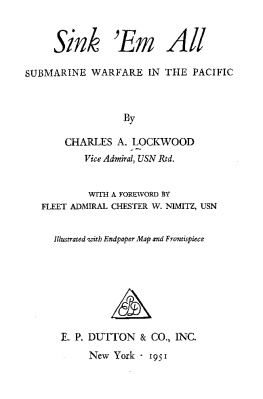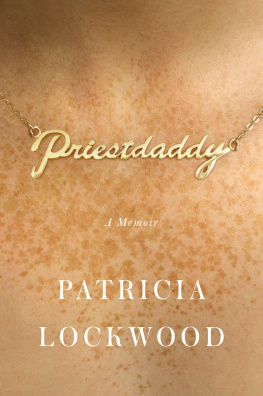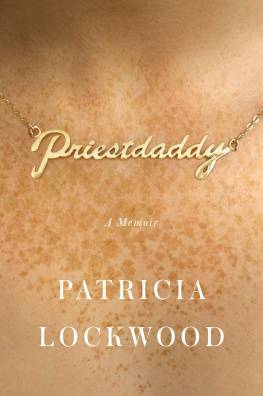About the Author
Jill Norgren grew up in Stamford, Connecticut. She received her B.A. from the University of Pennsylvania and her Ph.D. from the University of Michigan. She is Professor Emerita of Government and Legal Studies, John Jay College of Criminal Justice and the Graduate Center, the City University of New York. She is also the author of The Cherokee Cases: Two Landmark General Decisions in the Fight for Sovereignty and coauthor of Partial Justice: Federal Indian Law in a Liberal-Constitutional System and American Cultural Pluralism and Law. She writes on U.S. politics and law and has a particular interest in the history of American women. Her articles have received awards from the American Society for Legal History and the United States Supreme Court Historical Society. She wrote much of this book while a fellow at the Woodrow Wilson International Center for Scholars in Washington, D.C.
1
Early a Widow
I ask no favors for my sex.All I ask our brethren is, that they will take their feet from off our necks, and permit us stand upright on that ground which God designed for us to occupy.
Sarah Grimk, womens rights advocate, 1837
Belvas mother, Hannah, was a Greene. Family histories describe the Greenes as descended from Magna Carta barons. An early forefather, John, is said to have sailed from England in the 1630s to the British West Indies, found it Godless, and shipped out for the Massachusetts Bay colony. He and others from whom Hannah was descended were also said to be followers of the religious dissidents Roger Williams and Anne Hutchinson.
Sometime after the War of Independence, Belvas branch of the Greene family began a journey westward. A son of this clan, William, took his wife and children as far as Washington County, New York. Hannah, the youngest of six children, was born there in 1812. In 1814, wanting better farmland, William joined family members in another trek to the far western corner of New York State, where several of the men had purchased property from the Holland Land Company.
Hannahs family settled in a frontier region some twenty-odd miles east of Niagara Falls. This had long been the land of the Iroquois Nation (Seneca), but in 1669 the French explorer, Robert Cavelier de La Salle, had established a post on what was then called the Niagara Frontier, and was followed by French traders and missionaries. In 1759 English forces expanded into the area following their capture of Fort Niagara. Later yet, warfare and politics placed the region in the hands of the United States, which sold much of it to financier Robert Morris. Seeking quick profits, he arranged the sale of a million and a half acres of western New York to Dutch bankers who capitalized the Holland Land
Belvas father, Lewis J. Bennett, was also born in Washington County, New York. His people were Scots. Late in life Belva proudly wrote to a niece that Lewiss ancestor Nathan High fought in the Revolution, so we have a part in the foundation of the Govt. Lewis was five years older than Hannah. It is possible that the Greenes and Bennetts moved west to Niagara County at the same time, but Bennett lore was scarce; Belva always knew more about her mothers people.
The Greenes claimed their lands from the Holland Company and started the hard work of clearing acreage. They sowed wheat, corn, and barley. Dairy farms were started, and then fruit orchards. Next came the gristmills and sawmills, powered by the plentiful local stream water. Rising from this industry were clusters of small farming communities. Royalton, in the southeastern corner of Niagara County, was one such village. The first town meeting was called within a few years of the Greenesnow spelled Green by somearrival. Hannahs father, a respected Baptist elder, was elected to the post of inspector while Solomon Richardson, husband of Hannahs older sister, Ruth, took up duties as constable. Royalton looked to its civic organization none too soon. A rural community needed law and order, roads and schools, and a sensible plan for dealing with the blessings, and problems, of the Erie Canal.
In 1814, when the Greens emigrated west, it took weeks to cross New York State. To obtain goods from the port city of New York, or to sell farm produce, or timber, from the center of the state required long, arduous, and expensive journeys across bad roads, and then ship passage on the Hudson River. Market expansion and westward movement cried out for a quick and inexpensive means of connecting the Atlantic Coast to the Great Lakes. Spurred on by future governor DeWitt Clinton, the New York State legislature agreed to support the building of an artificial river.
Begun in 1817, and completed in 1825, the Erie Canal transformed the landscape and economy of northern New York. Hundreds of laborers and artisans flooded the route of the planned waterway, and remained after the canal was completed. They brought new cultures and a stronger cash economy. Water-powered manufacturing spread from the path of the canal, as did villages and towns servicing the needs of merchants and travelers. At Lockport a series of locks had been built to breach the Niagara escarpment, permitting the canal to continue west to Buffalo. When the canal opened in 1825, Lockports population equaled that of Rochester and Buffalo. It was a bustling hub whose cosmopolitan resources nourished the residents of surrounding villages like Royalton.
Hannah Green married Lewis Bennett at Royalton on December 11, 1827. She was fifteen; the groom, twenty. It appears that the newlyweds lived with a maternal aunt and her husband, the John Layton family. Belva and her older sister, Rachel, were born at the Laytons, and it is probable that Lewis Bennett labored for Layton and neighboring farmers.
The five Bennett children, Rachel, Belva, Warren, Cyrene, and Inverno, born between 1828 and 1841, shared a close relationship with one another and the numerous members of Hannahs extended family who lived nearby. Belva had mixed feelings about a childhood in which her accomplishments and ambitions were not particularly valued. She complained that she did the work of a boy caring for the farm animals but did not get proper credit.
The Bennett children attended country schools near Royalton when they were not needed for farm work. Belva was a good student and at fourteen was offered an instructors position by the local school board. With the family in need of money, she ended her formal education and took up the life of a rural schoolteacher. She boarded with the parents of her students and had her first taste of independenceand sex prejudice. As a female instructor, she received less than half the salary paid to her male counterparts. She called this treatment odious, an indignity not to be tamely borne, complaining to the wife of a local minister As the daughter of a poor family she had little choice but to accept the pay that was offered.
While teaching Belva began to imagine a life different from that of her mother and auntsthe life of a great man. She asked her fathers permission to go back to school, but Lewis refused her request. He was a man of limited means and did not believe that women needed a higher education.
In her fifties Belva recalled the decision to marry: The daughter of a poor farmer, I followed the well-trodden road, and was united in marriage to a promising young farmer of my neighborhood.
Uriah and Belva married four months after the revolutionary stirrings of women, in July 1848, at Seneca Falls, New York. Here, ninety miles from the home of the newlyweds, sixty-eight women led by Lucretia Mott and Elizabeth Cady Stanton, and thirty-two men, including Frederick Douglass and James Mott, signed a Declaration of Sentiments. The short document, echoing the natural-law language of the Declaration of Independence, proclaimed the patient suffering of women denied an equal station in life by the government under which they lived. The facts submitted to a candid world included the denial of their right to vote, submission to laws in whose making they had no voice, a double standard in matters of morality, and limited access to education and well-paying employment. The declaration took particular care to spell out the abuse of women in marriage, condemning a system of law that gave husbands the power to deprive their wives of liberty, property, and wages.











